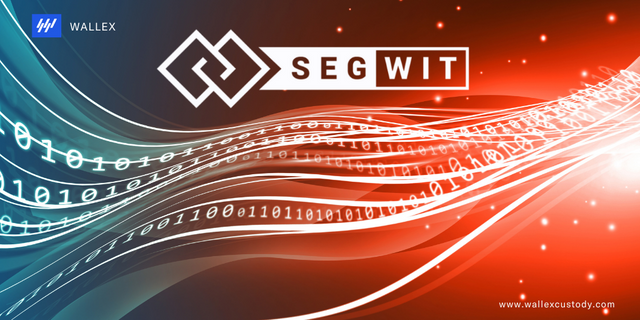
Something Bitcoin cannot afford to have again
SegWit is a technical process in which the signature data from Bitcoin transactions are removed to increase the block size limit on a blockchain. This removal action frees up a block’s space and additional transactions on the chain become possible. To segregate is to separate, and the term witness means a transaction signature. Therefore, Segregated Witness, or SegWit, is the process of separating transaction signatures.
Why SegWit?
SegWit was invented by Bitcoin developer Pieter Wiulle and introduced it during the Scaling Bitcoin Conference in 2015. The development of SegWit was an upgrade to resolve throughput transaction issues on the Blockchain. But though it was intended to increase the scalability of Bitcoin, the first cryptocurrency to implement the SegWit layer was Litecoin. The SegWit application in its essence, would effect the reduction of transaction weight on a block in the blockchain by segregating one transaction into two parts, thereby increasing the space for transactions to be included in a block of the same size.
The first section of a transaction holds the wallet addresses of the sender and the receiver. The second section stores the transaction signatures called witness data. What SegWit does is to remove the witness data from the main block, effectively reducing the size of the transaction. When this happens, free space allows for more transactions on the block which will greatly increase the network’s capacity. SegWit also solved transaction malleability that when the signature is moved out from the transaction data to the witness data, the transaction ID cannot be changed anymore.
The Bitcoin Scalability
Even without any major incidents involving Bitcoin occurred during the past 11 years, we can recall many times when Bitcoin’s transaction costs would shoot up to unreasonable amounts. Because of this, developers went back to the drawing table debating on how to best scale Bitcoin to be able to sustain transaction volumes which were growing by the day. The highlight of the clash came in 2017 when the Bitcoin development community was split in the implementation of SegWit. The hard fork pushed through giving birth to Bitcoin Cash.
SegWit Advantages
With SegWit being a feature of the Blockchain network, most Bitcoin-based services have now come to adopt its use. Since it serves as the gateway for scalability of Bitcoin and other cryptocurrency protocols, SegWit now makes possible the quick and efficient functioning of blockchain networks towards scalability.
Conclusion
While transactions via SegWit in the Bitcoin network is growing exponentially, not all are in favor of SegWit transactions, owing to Bitcoin’s significance and sheer size. The problem of Bitcoin’s scalability continues to hound it that is why we have seen hard forks occurring the past few years. After Bitcoin Cash hard fork, it forked again in 2018 via the Lightning Network to increase the 1MB block size limit to 8MB. SegWit2x was proposed during the 2017 debate as a compromise with SegWit to be implemented first before the block size is increased to 2MB. As we all know by now, the proposal was rejected by the majority of the Bitcoin community, the rift of which continues to this day. Altcoin networks may have an easier time and even taking SegWit to higher levels.
Get it right the first time with your digital investments. Wallex is a FinTech company that employs strategic blockchain solutions to your needs such as Trust, Custody, Exchange, Transfer, and Asset Management. Make Wallex your digital business partner as you enter into the new normal of things. You will be glad you did. Call us now. Our friendly line is open 24/7. https://www.wallexcustody.com